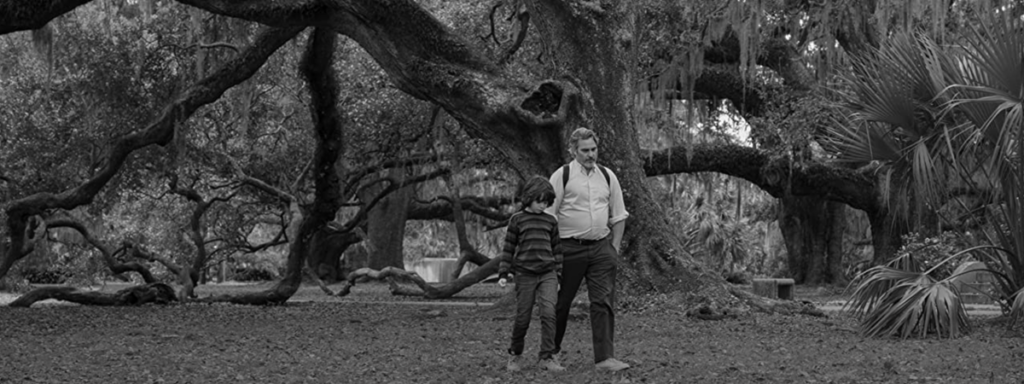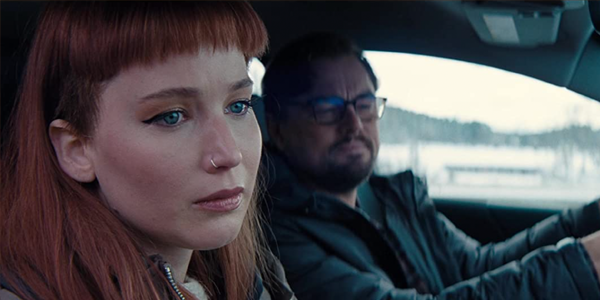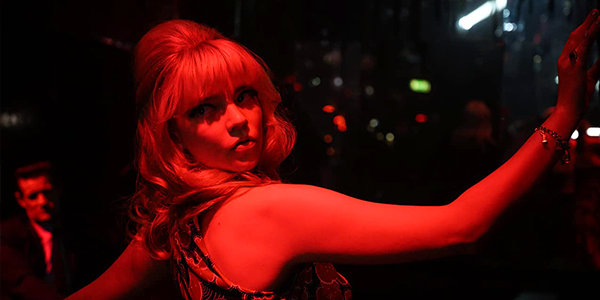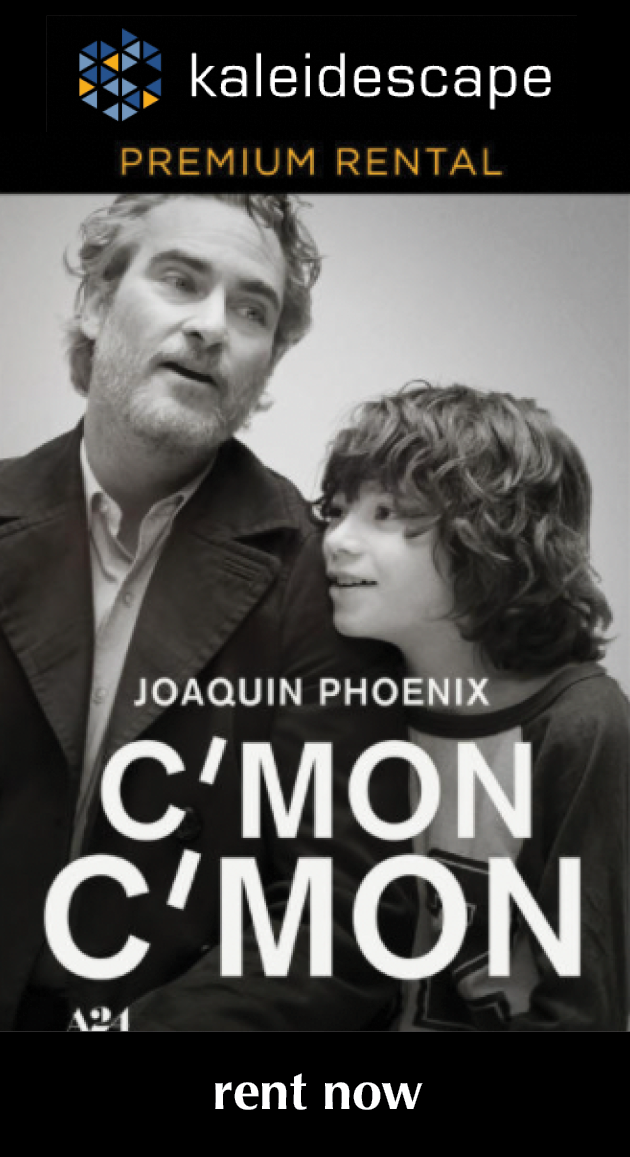recent reviews
Sign up for our monthly newsletter
to stay up to date on Cineluxe
This Joaquin Phoenix road picture transcends the genre thanks to a standout performance from Phoenix’ nine-year-old costar
by Dennis Burger
January 4, 2022
Any film that attempts to bite off as much as Mike Mills has done with C’mon C’mon invariably ends up choking on its own aspirations. By that I mean most films that attempt to be this thematically rich and that try to juggle so much meaning eventually drop a ball or two. The thing is, I suspect Mills would tell you C’mon C’mon is incredibly simple and straightforward, and perhaps he’s right. Perhaps its density is an emergent property of its characters and the positions in which he’s placed them. But for whatever reason I can’t stop thinking about this film and marveling that it never falls apart.
Narratively, I suppose you’d have to describe it as a road picture. The plot involves Johnny (Joaquin Phoenix), a public-radio audio journalist who has to take a break from an assignment to babysit his nephew, Jesse, whom he barely knows. Jesse’s mom Viv (Gaby Hoffmann) has been called out of state to tend to her estranged husband as he struggles with a mental breakdown. When there’s a holdup on that front and Johnny has no choice but to hit the road again, he brings this odd little nine year old with him, first from L.A. to New York, then to New Orleans.
Like most good road pictures, the cities themselves serve as characters, but it’s really the relationship between Johnny and Jesse that propels the story, and the bulk of the scenes are set in bathtubs and beds, as well as through cross-country phone calls and text messages. I know none of that sounds very exciting but it’s an incredibly gripping film from start to finish, largely due to pitch-perfect performances by Phoenix and wunderkind Woody Norman, who plays Jesse so effortlessly you almost have to suspect Mills patted him on the back and said, “Go be a kid.”
But little clues throughout suggest that, aside from a bunch of performances from non-actors that serve as Johnny’s interviewees, this may well be Mills’ most tightly scripted film. Despite that, the sort of impossibly clever dialogue that has dominated his work is nowhere to be found here. Instead, he seems to work through his penchant for having his characters speak in literary prose by having them read books—to one another and to themselves. With that out of his system, the rest of the dialogue sounds like it flows straight out of the brains of his characters in the moment.
And that’s a consequence of honesty. This isn’t merely Mills’ most genuine film, it’s also one of the most unapologetically frank films I’ve seen in ages and undoubtedly one of the most cinematic (by which I mean I can’t conceive of way this story could have been told in any other medium).
The script cuts straight to the heart of the weirdness that arises from children and adults interacting, especially when those adults are holding onto baggage from their own childhoods. It’s about adults struggling to understand the emotions of children who don’t yet have the vocabulary to express their feelings, juxtaposed with those children’s lack of inhibitions and their ability to articulate things adults can’t—or won’t. You could say the entire film is about juxtapositions. But if I start rattling off further examples, we’ll be here all day.
So I’ll just say this: One of the ways Mills explores the importance of honesty is by juxtaposing that truthfulness with artifice—indeed, deceit. And that extends all the way to the look and sound of the film. C’mon C’mon was shot monochromatically—I would call it black & white but there’s a hint of warmth to the imagery that isn’t quite prominent enough to qualify as “sepia toned”—and at first there seems to be no good reason for that. Whether it was a conscious or subconscious decision, though, I think Mills is using the monochromatic palette to reminds us that screens aren’t reality, that even something that seems as genuine as this film is a meticulously crafted construct.
There’s also some auditory evidence I’m on the right track here. For much of the first act, I wondered why the audio was mixed in Dolby Atmos, given that it was largely a monophonic-verging-on-stereo experience to that point, aside from a few musical cues. There’s a scene early on, though, in which Johnny—desperately trying to make any meaningful connection with Jesse that he can—gives the boy his microphone and recording equipment and takes him to Santa Monica for a fun day out. And it’s during this scene—in which we experience the world as Jesse hears it, through his microphone and headphones, then filtered through the magic of sound mixing and out our home cinema speakers—where the mix explodes in every dimension. It’s simply a marvelous sensory experience but it’s done in a way to remind you that, Hey, what Jesse is experiencing—intoxicating though it may be—is one level removed from reality. And what you, dear viewer, are experiencing is at least a few levels further removed.
And so it goes for the rest of the film, which is served beautifully by Kaleidescape’s PVOD download. The HDR10 transfer gives the imagery room to breathe, especially at the lower end of the value scale, and it delivers this captivating study in light and shadow flawlessly, with no banding, moiré, or misplaced or softened textures. It isn’t a razor-sharp film but it doesn’t need to be to have effect. Kaleidescape also delivers the Dolby TrueHD Atmos soundtrack unimpeachably, and while it may not be the most dynamic or consistently hard-hitting of mixes, it’s still one you want to experience through a good center channel. On rare occasions, the mix gets so dense I expected dialogue intelligibility to be a problem, though it never is.
I could say more. Hell, I could write a book about this film and feel like I’d only scratched the surface. But C’mon C’mon is so packed with universal truths—and subtle, seemingly intentional deceptions—that I worry any more said on my part would color your own interpretations of the material. All I can do is implore you to watch it at your earliest convenience and on the best home cinema system you have access to.
Dennis Burger is an avid Star Wars scholar, Tolkien fanatic, and Corvette enthusiast who somehow also manages to find time for technological passions including high-end audio, home automation, and video gaming. He lives in the armpit of Alabama with his wife Bethany and their four-legged child Bruno, a 75-pound American Staffordshire Terrier who thinks he’s a Pomeranian.
PICTURE | The HDR10 transfer gives the imagery room to breathe, presenting this captivating study in light and shadow flawlessly, with no banding, moiré, or misplaced or softened textures.
SOUND | Kaleidescape delivers the Dolby Atmos soundtrack unimpeachably. It might not be the most dynamic or consistently hard-hitting of mixes but it’s still one you want to experience through a good center channel.
© 2023 Cineluxe LLC







